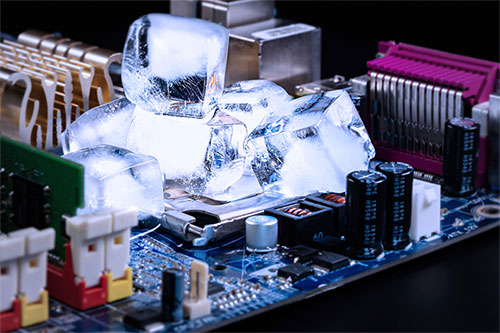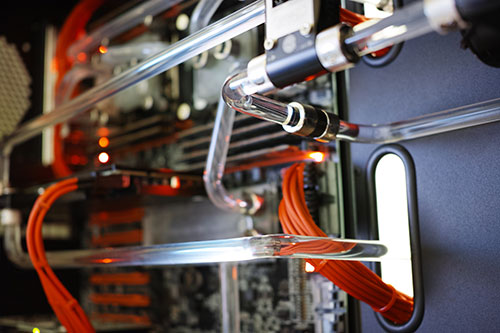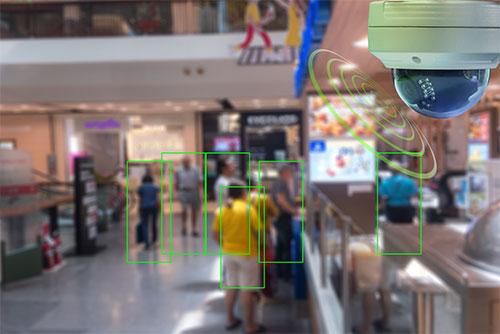Servers set a new sales record. AI is augmenting customer service workers, rather than replacing them. Most adults use social media. And finely-tuned LLMs can identify customer needs better than a human professional.
That’s some of the latest from leading tech analysts and market researchers. And here’s your research roundup.
Servers Set Record Sales
Server sales set a new record in this year’s third quarter. Global sales of these systems rose 61% year-on-year, reaching an all-time quarterly high of $112.4 billion, according to market watcher IDC.
Of that total, $76.3 billion came from x86 servers, representing nearly 70% of the total. Compared with the year-earlier quarter, that marked an increase of about 33%, IDC says.
A much bigger jump came from sales of non-x86 servers. Those sales rose 197% year-on-year, reaching a worldwide total in Q3 of $36.2 billion.
Another fast-growing sector is servers with embedded GPUs. In Q3, sales of these AI-ready servers rose nearly 50% year-on-year, IDC says. Systems with GPUs now represent more than half of all server market revenue.
Growth of server sales in the quarter varied by region. The biggest sales rise was in the United States, where Q3 server sales rose nearly 80% year-on-year, IDC says. Other fast growers included Canada (with server sales up 70%), China (38%) and Japan (28%).
AI Helps Customer Service
Artificial intelligence is mainly augmenting, rather than replacing, customer-service workers, finds a new survey.
The survey, conducted by technology analyst firm Gartner, finds that only one in five customer-service leaders (20%) have reduced staffing due to AI. Even better, about half the respondents (55%) said their staffing levels have remained stable, even as AI has enabled them to handle higher customer-service volume.
AI can even lead to the creation of new jobs. Four in 10 respondents to the Gartner survey (42%) said their organizations are hiring specialized roles to support AI deployment and management. These new roles include AI strategists, conversational AI designers and automation analysts.
The survey, conducted by Gartner in October, collected responses from 321 customer service and support leaders.
Social Media for Adults? Yes!
If anyone tells you social media is strictly for kids, set them straight. A poll conducted by Pew Research finds the vast majority of U.S. adults use social media.
Specifically, YouTube is used by over eight in 10 U.S. adults (84%), the survey finds. And Facebook is used by seven in 10 U.S. adults (71%).
Another social media platform popular with grownups is Instagram. The Pew survey finds it’s used by fully half of U.S. adults.
Plenty of other social media sites are used by U.S. adults, too, if in smaller numbers. They include TikTok (used by 37%), WhatsApp (32%), Reddit (26%), Snapchat (25%) and X (21%).
The survey was conducted by Pew earlier this year, and it drew responses from 5,022 U.S. adults.
The LLM Knows What You Want
Large language models can identify customer needs better than an expert, finds a recent research paper from MIT.
To conduct their experiment, the paper’s three co-authors—John Hauser of MIT Sloan, Artem Timoshenko of Northwestern’s Kellogg School, and MIT pre-doc Chengfeng Mao—fine-tuned an LLM using studies supplied by a market research firm.
They then compared the output of their finely-tuned LLM with that of human analysts and untrained LLMs. The test asked consumers about their preferences for wood stains. In all, consumers were asked about eight primary customer needs and 30 secondary needs.
The results: The fine-tuned LLM identified 100% of the customers’ primary and secondary needs. By comparison, the human analysts missed a few, identifying 87% of the primary needs and 80% of the secondary needs.
That said, actually understanding the needs of wood-stain customers remains a job for humans, says Hauser, a professor of marketing at MIT Sloan.
“If you have to pull customer needs out of a story, the supervised fine-tuned LLM can do it,” he says. “But if you ask an LLM what customers care about when staining a deck, its answers are superficial.”
Want to learn more? Read the full paper.












